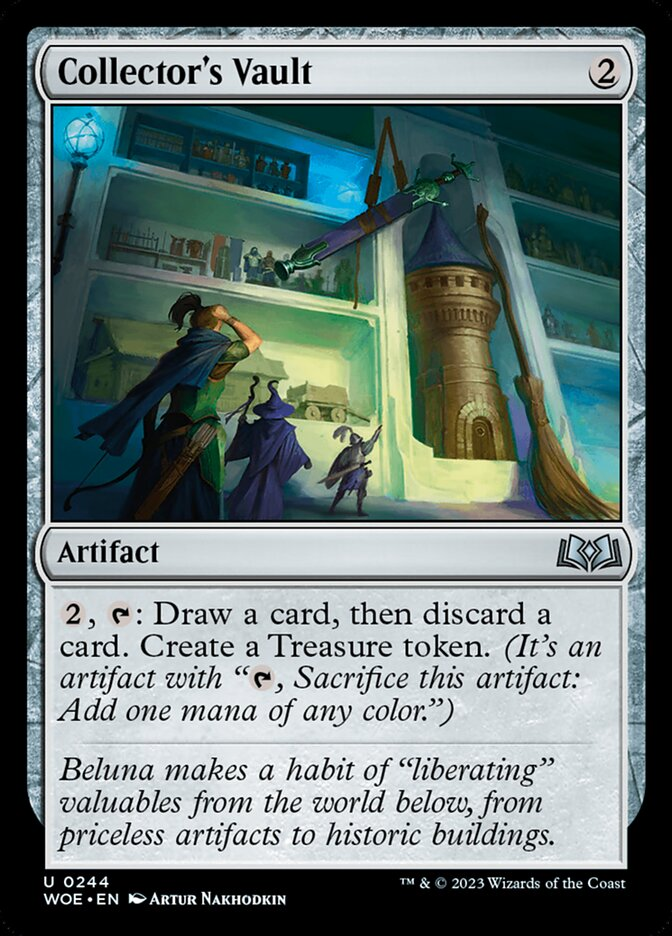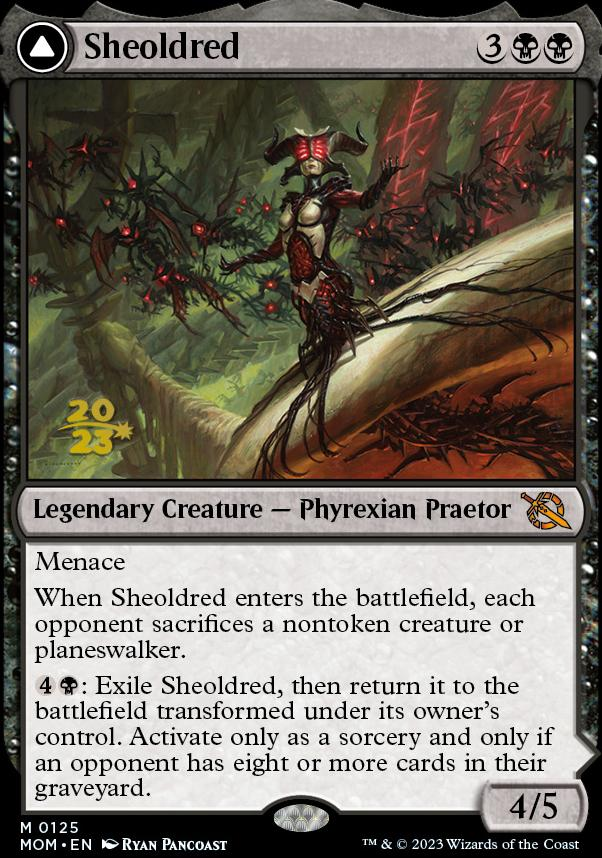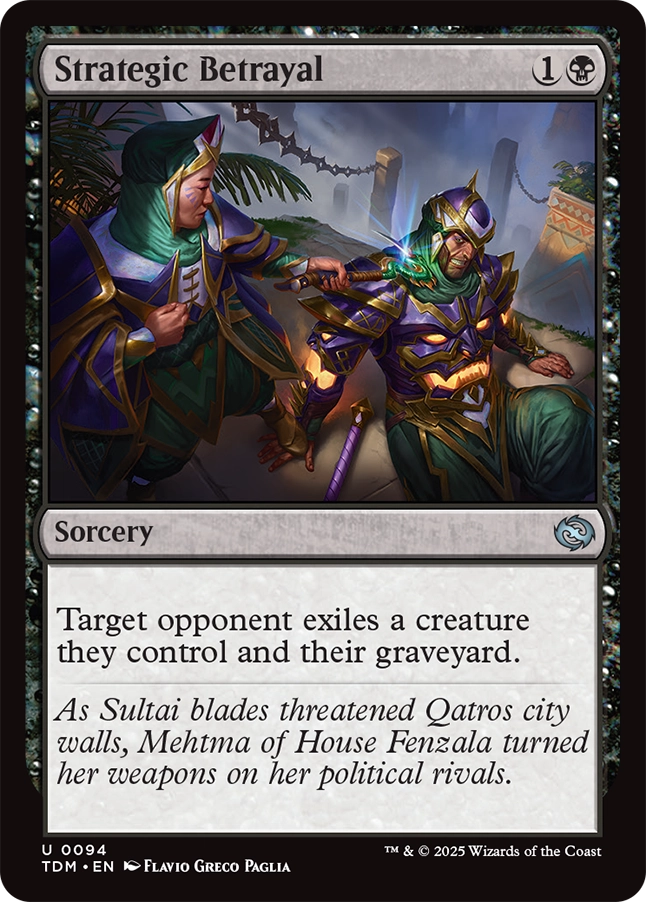Comprehensive Deck Tech: Mono Black Control in Bloomburrow Standard!
Hello my fellow swamp enjoyers!
Bloomburrow is upon us, and so far it really does seem like the new set and rotation have blown the format wide open. Brews are flowing all up and down the ladder, and I couldn't be happier. The matches are interesting, the cards seem strong but not ubiquitous or bonkers like some of the cards that rotated, and it's been a wonderful return to form after our stagnant meta previously.
While Midrange is always going to be my baby, and I'm going to continue tuning it, I wanted to get down my thoughts today on an absolute abomination of a deck that I brewed up on a whim the other day that... honestly works. It works really, really well, especially in a meta in flux where people aren't ready for you but you can basically be ready for anything. Presenting... Mono Black (Token?) Control!
Since this is a control deck, talking about cards on the curve doesn't necessarily make a ton of sense. Instead, I'm going to talk about groupings of cards and what their goal is, but this is likely going to have a lot of overlap. That being said, let's talk first about the token synergies.
Tokens
The one thing to note about the token synergies is that all of these cards can be good in a vacuum. Poisoner is a flexible curve-filler that can be a 5 mana removal spell, or just a 1 mana food maker that transitions into a 3 power lifelinking body on curve (since we tend to block and trade with it, that makes it a bad Smiting Helix, I suppose). Collector's Vault, if played on curve, can actually serve as a bit of filtering and ramp to play our 5 mana haymakers on turn 4. Rowan's is an instant speed draw spell for when you're playing the draw-go strategy, and Fountainport just makes value out of thin air.
The real draw to this deck is the little micro-synergies that suffuse this package. Poisoner's token, if you don't need it for the life, can be sacrificed to either Fountainport or Rowan's to fuel more draw. The treasure from Collector's Vault can be used for the same thing. The incidental tokens pile up in ways that, once you have an okay base of mana, keep cards and bodies flowing in. The food can keep you alive, the treasures get you to big cards quicker, the fuel from Fountainport can close out the game and you CAN kill your opponent by slapping them in the face with fishes. There is an immense amout of mana efficiency and flexibility in this package, making it a real draw.
Removal
This is basically your typical removal suite in black. The numbers are tweaked slightly to accomodate the manabase (3 Cut Down instead of 4 since we like to play Sunken Citadel on turn 1). The real noteworthy addition here is Feed the Cycle, which can be a cheap way to remove planeswalkers while also maintaining the targeting that Sheoldred's Edict lacks. There are micro-synergies here too--Collector's Vault gets cards into our graveyard to forage, and you can even use the Poisoner token in a pinch if you really need to. Three Go For the Throat suffices over any copies of Shoot the Sheriff, as there are FAR more outlaws running around right now than artifact creatures.
Bombs
Deadly Cover-Up remains an incredibly potent sweeper in a world where extraction effects can be a game-deciding play for a control deck. This deck can win against ramp because, with 2 uses of this card, you can rip out the Atraxas and you can rip out the Herd Migrations--their two main win conditions. If you get a lucky hit with a Duress against a red deck, you can use this to get rid of every copy of Urabrask's Forge (the nightmare card for you). Being able to divest the opponent of their most useful card in their entire deck cannot be overstated--but as always, the micro-synergies are the real treat. You don't have to ONLY collect evidence 6 with Cover-Up. You can exile your entire graveyard with it if you want--and you want to, since that powers up your Ashiok to completely remove their deck from the game. Vraska can also be used to proliferate onto the Ashiok, getting it ready to end the game in a single turn. This combination is so quick that you often only need a single turn of stabilization to threaten it. The miser's copy of Sheoldred is a bit of a flex slot--you could have a second Vraska or something like an Aclazotz in there and it would probably do the trick. I chose Sheoldred since, without very many creatures in the deck, Aclazotz tends to get eaten by the Throats stranded in their hand and we usually have too many cards to get him back. Sheoldred comes down and eats a semi-important creature, reestablishing board control, and can occasionally be a win-condition on her own. The Praetor wins out! Virtue of Persistence serves as a flexible sustain tool, removal spell, and win condition all on it's own. You can ramp it out as early as turn 5 with Collector's Vault, and even just recurring your Poisoners with it can outgrind your opponent. The sorcery mode even synergizes with Poisoner--instead of popping the food for life to use with the Poisoner, Virtue + Poisoner can even kill a Sheoldred. Not the worst deal.
Lands
The utility lands are one of the highest draws for being mono-colored. Sunken Citadel is a hugely impactful land, activating Demolition Field with a single tap or making a token with Mirrex or Fountainport with only two other lands. We shaved a copy of Cut Down understanding that the most important land drop to make is often landing a Citadel on turn 1. In addition, Mirrex and Fountainport can sort of be a draw engine on their own--if you have 2 Citadels, an extra land, and Mirrex/Fountainport, you can get an extra card every turn (make a token with Mirrex, sac it to Fountainport). Is it slow? Yes. Is it mana-intensive? Also yes. Is it potent in a grind game where your lands can give you value? Absolutely. The mana is so flexible in this deck between sinking it into Collector's Vault, Fountainport, making food with poisoner. If you survive the first few turns, you can really start grinding the opponent out, and the lands are a big part of that.
The Manabase:
1MV - While we will typically not care about playing Cut Down on turn 1, we do have 13 definite black sources (Swamps) and 3 sort-of black sources (Mirrex) we can use if we absolutely must kill something, so it all works out.
2MV - All of our two mana cards are 1C or 2, so our sources don't have to be that stricts. 17* (asterisk includes Sunken Citadel on 1) black sources does the job nicely, as we only would need 13.
3MV - Poisoner and Rowans are single pips, but Feed the Cycle will take a second black if you can't forage so we have to be aware of that. While 18 is the minimum amount required to cast a 1CC card on turn 3 with about 92% consistency, we have 17* sources without Mirrex, and we can hold a Mirrex if we need it. I accept the minimal consistency hit here to play our wealth of utility lands. If you really needed this extra source, I'd go down 1 Demolition Field for 1 extra Swamp.
4MV - We have no real 4 drops, but if we wanted to double spell on turn 4 we'd treat it as a 2CC cost. According to our dear friend Frank Karsten, we'd need 16 sources to cast a 2CC on turn four with consistency. Given we have 17*, we satisfy that need.
5MV - This is the most important part of our curve. We usually need to boardwipe by this point, or we've used single target removal to clear the way for an Ashiok (both 3CC). Frank says we need fifteen, we have... 17*! Man, this manabase stuff is easy for a mono-colored deck.
7MV - Could we play a Virtue of Persistence on curve? With our 17* sources facing down Frank's requirement of 12, yes we can!
The Sideboard
The meta is in a bit of flux right now, but there are some clear decks that I'll give full sideboard guides for. The sideboard strategies against overall archetypes can usually be applied in some form to decks not specifically listed here.
vs Golgari Midrange:
In:
+ 2 Liliana of the Veil
+3 Duress
+3 Cruelclaw's Heist
Out:
- 2 Gumdrop Poisoner
- 3 Cut Down
- 3 Collector's Vault
The idea against Golgari is that, as they attempt to focus more on outlasting all our removal, we need to pivot to be a bit more disruptive. Our land base can grind just fine, and we don't necessarily need the ramp, so Collector's Vault comes out for a newcomer: Cruelclaw's Heist. This card is fantastic because they'll often drop some amount of removal (since you're a control deck). That means, if you steal their value 3 drops like Preacher or Glissa, oftentimes you can take advantage of it in a way they can't. Your number 1 thing you'd like to see off of Cruelclaw's Heist is definitely Liliana of the Veil. as she is both a fantastic source of repeatable removal and resource denial in a game where every card counts. Your number 1 target for Deadly Cover-Up is almost always Mosswood Dreadknight, as they will see multiple over the course of the game and will overrun your copies of Anoint with Affliction. The secondary target for Cover-Up has to be Restless Cottage. While difficult to set up, getting rid of their huge attacking lands means you can rest a little bit easy and focus on getting your engine up. This matchup is a close one, but they're definitely beatable and the games are usually very skill-intensive.
vs Boros/Jeskai Convoke:
In:
+ 2 Malicious Eclipse
+ 2 Duress
Out:
-4 Collector's Vault
The deck is already fairly tailored to beat wide board strategies, so there isn't a ton of siding needed. Collector's Vault is by far our biggest liability, as it's too clunky to have any real advantage against Convoke. The eclipses help against early aggression, and Duress comes in to take out any of their sided cards like Invasion of Gobakhan or (the Boogeyman) Urabrask's Forge.
The siding plan is pretty similar against Boros Mice, though Malicious Eclipse is a little less of a slam dunk due to all their prowess. That being said, I haven't seen Mice anywhere near as much, so I don't have too much to say about it.
vs. Golgari/Jund Analyst
In:
+ 2 Soul-Guide Lantern
+ 3 Duress
+ 2 Liliana of the Veil
Out:
- 2 Collector's Vault
- 2 Gumdrop Poisoner
- 1 Virtue of Persistence
- 1 Cut Down
- 1 Sheoldred
The newer versions of Analyst use either the green mythic Calamity Beast or Iridescent Vinelasher as a payoff for the normal Analyst engine. While potent, these cards are super susceptible to removal, graveyard hate, and extraction effects--things you have in spades. We don't really need the grind or slow removal of Gumdrop poisoner, and we'd prefer our hate to be more targeted, so we're shaving on some of the least relevant removal options. Look to try and set up a Deadly Cover-Up on Vinelasher to remove their easiest win con, then just remove their engine creatures (Nissa and Analyst) before they get too much value. The Calamity Beast, while huge, is actually not as big of a threat as you think... as it can just be blocked by fish. That's right, Fountainport can hold it off almost indefinitely. This matchup isn't too bad at all, but it does seem to be falling off the ladder a bit (understandable), so it may or may not be a relevant consideration.
vs Control:
Out:
- 3 Cut Down
- 4 Gumdrop Poisoner
- 2 Anoint with Affliction
- 1 Go For the Throat
In:
+ 3 Duress
+ 3 Cruelclaw's Heist
+ 2 Liliana of the Veil
+ 2 Realmbreaker, the Invasion Tree
There haven't been many control decks running around these parts, but if you see them, this should be your plan. Shave off of raw removal and defnsive cards, and throw in big disruption and grind tools. Cruelclaw's is a big deal against blue control decks as you can snag a counterspell. Given your land utility, you can start to play the draw-go style a little better than they can, as you are constantly threatening a counter war that they are hard-pressed to win, or the ability to play a haymaker with counterspell backup. Realmbreaker is a difficult to answer grind machine that can win games on its own, especially against Azorius. Look to snag spare Mirrexes or Restless lands with it, or recur Demolition Fields in a pinch.
And that's it for this deck! Bloomburrow is a home run set, as far as I'm concerned, and I'm having a ton of fun playing this deck and this format. See you out there!























Comments
Post a Comment